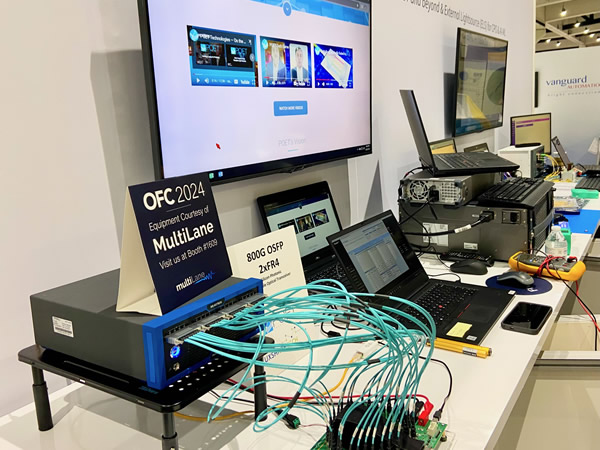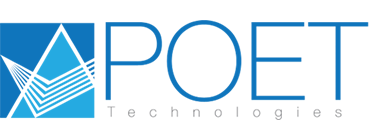OFC 2024 Review: POET Creates Buzz with 200G/Lane Products for 1.6T and Beyond
April 24th, 2024

From the start of the 2024 OFC Conference the hot trends were noticeable — and all of them had to do with the AI industry’s insatiable demand for more speed, performance, energy efficiency, and cost savings. The industry’s need for data transmission and compute innovation was made so clear at the show that new approaches are now on the cusp of driving radical change.
Among the hot topics at the largest gathering in our industry was the term “optical interposer.” It was a good time to remind everyone that the POET Optical Interposer™ was conceptualized in 2017 and the first products based on it were introduced in 2022. As others try to create or fine tune their own optical interposers, POET is far ahead with a platform that has quickly matured and is revealing more and more adaptability as the company builds customized solutions for our partners in the AI and datacom industries. Based on the POET Optical Interposer, next-generation products have now been announced that are on par with the leading companies in the sector.
At OFC, which was held at the San Diego Convention Center from March 26-28, the POET team had conversations with several elite enterprises that want to accelerate their move into 800G and 1.6T data speeds — the other trendy topics at the event. Products that reach 1.6T are so fast that they will give end users the ability to send the equivalent of about 150 films each second!

The other buzz phrase was 200G/lane, which is going to be essential architecture in the near term because it will allow for faster signal processing. The 200G/lane POET transmit optical engine, which evolves the work done on the POET Infinity™ chiplet, was among the showcase products that were demonstrated at the company’s OFC booth. The 200G/lane transmitter can be used in 800G FR4 and 800G DR4 applications and, most importantly, in a 1.6T 2xFR4 or 1.6T DR8 format. At OFC, POET showed attendees a live demonstration of its 200G/lane transmit optical engine, featuring an electro-absorption-modulated laser (EML), in action and the outstanding results that included excellent TDECQ and extinction ratio performance.
The 200G/lane receive optical engine, which integrates photodiodes and TIAs, and POET Starlight™ packaged light source were among the other products that turned heads. The reactions served as proof of what POET’s engineers can do, and sparked many conversations with new and existing customers.
[Read more about 200G/lane and hybrid integration in this article.]
It became easy to see that the developers of AI, and the large data center operators need more speed to advance their product lines. AI models are doubling in size every four months, while AI accelerator chip designs are on an 18-month refresh cycle. Existing on-chip high-bandwidth memory cannot keep up. AI transformer architecture performance is no longer governed by raw compute power, because they are limited by interconnect latency and lack of memory bandwidth. What many in the industry have come to realize is the benefits of optical interconnects and how they solve the bottleneck of data movement. AI service providers are ramping data centers with 800G and above transceivers to handle the industry’s requirements.
POET is firmly in that mix of companies that can provide answers to these pain points. Some of the largest companies in the world were attracted to our technology because of the results shown at our booth demos. Resulting meetings at the conference gave our team the chance to explain why POET’s products are commercially viable and scalable to 1.6T and beyond.
MultiLane Partnership On Display
During OFC, POET announced a partnership with MultiLane that will focus on jointly developing 800G, 1.6T, and higher speed pluggable transceivers that will reduce cost and improve power efficiency over competing options. These products will address the increasing need for more scalable hardware components for AI and cloud data center markets. MultiLane’s equipment was used in POET’s demonstration of its 2x800G FR4 pluggable transceiver at the OFC corporate village. Other collaborations have already begun between the companies.
What’s Next
The 2024 OFC Conference was the clearest indication yet of the industry stature POET has achieved. From the start of the conference, it was evident that the path we have been working on for more than six years has gained the attention of every major player in optoelectronics and many newcomers too.
The POET team is in the midst of follow-up meetings with new and prospective clients. The company’s strategy of adding modules, such as POET Wavelight™, to its product portfolio and designing an adaptable material-agnostic platform technology is igniting interest. If customer engagements remain positive, then the POET Optical Interposer will prove its ability to disrupt the status quo as it powers the age of photonics.
< Back to Blog
